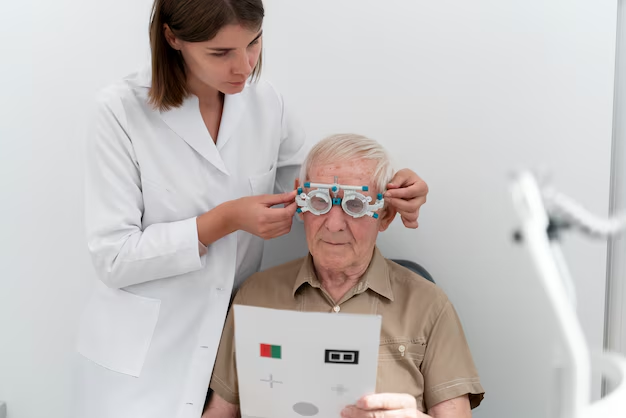Understanding Cataracts: What Are They and How Can You Approach Treatment?
Cataracts can significantly impact daily life by clouding vision and making routine tasks, like reading or driving, difficult. Many ponder if there is a cure and explore various avenues to manage this condition. This guide delves into what cataracts are, their symptoms, and potential ways to address them, ensuring reader clarity without rendering medical advice.
🎯 What Are Cataracts and Why Do They Form?
Cataracts are a common eye condition where the clear lens of the eye becomes cloudy, leading to impaired vision. While they can develop at any age, they're more prevalent with aging. Understanding why they form serves as the first step in addressing them effectively.
Causes and Risk Factors
Several factors contribute to the formation of cataracts, including:
- Aging: The most common cause. As we age, proteins in the lens break down, leading to cloudiness.
- Medical Conditions: Diabetes and high blood pressure can heighten the risk.
- Environmental Factors: Prolonged exposure to sunlight or UV rays can increase susceptibility.
- Lifestyle Choices: Smoking and excessive alcohol consumption may contribute to cataract development.
Symptoms to Monitor
Early detection is key to managing cataracts. Keep an eye out for:
- Blurred Vision: It may start gradually and worsen over time.
- Glare Sensitivity: Bright lights become increasingly glaring.
- Fading Colors: Colors appear less vibrant or more yellowed.
- Difficulty Night Vision: Seeing clearly at night becomes a challenge.
📚 Types of Cataracts
Before exploring potential cures or treatments, understanding the types of cataracts can guide the approach to management.
Nuclear Cataracts
Form in the center of the lens and are commonly associated with aging.
Cortical Cataracts
Begin at the lens's edge and make their way inward, affecting overall sharpness and clarity.
Posterior Subcapsular Cataracts
Develop at the back of the lens, often progressing more rapidly than other types.
🔍 Exploring Treatment Options for Cataracts
Curing cataracts in the traditional sense usually means surgical intervention. However, understanding the full scope of treatments can offer insight into the range of options available.
Non-Surgical Solutions
Although surgery is the primary solution, there are ways to manage symptoms before resorting to surgical interventions.
Prescription Glasses
For early-stage cataracts, updated prescriptions might help manage cellist's vision, allowing those affected to see more clearly for a time.
Anti-Glare Lenses
These can improve vision clarity when glare sensitivity is a major issue, often benefitting those who drive frequently at night or work in bright lighting conditions.
Lifestyle Adjustments
Making small lifestyle changes can help slow cataract progression:
- Sunglasses with UV protection
- Healthy Diets rich in antioxidants
- Quitting Smoking to reduce risk factors
Surgical Options: The Primary Solution
When cataracts significantly impact quality of life, surgery becomes the recommended course of action. It is generally safe and effective, with most patients experiencing a substantial improvement in vision.
Phacoemulsification
The most common type of cataract surgery, involving the emulsification of the cataract and insertion of an artificial lens.
Extracapsular Surgery
Less common and usually reserved for advanced cataracts, involving the removal of the cloudy lens and replacement with an artificial one.
What to Expect After Surgery
While recovery is generally straightforward, expect a brief adjustment period post-surgery. Protective eyewear and follow-up visits to a healthcare professional ensure optimal recovery and adaptation to the new lens.
🤔 Preventive Measures: What Can You Do?
While cataract surgery is highly successful, prevention through lifestyle choices remains pivotal.
- Regular Eye Exams: Help catch cataracts early.
- Healthy Living: A diet rich in nutrients and a smoke-free lifestyle can reduce risk.
- Sun Protection: Always wear UV-protective sunglasses outdoors.
💡 Key Takeaways: Managing and Understanding Cataracts
Here's a concise bullet-point summary for easy reference:
- 🧠 Understand Cataracts: Clouding of the lens, more prevalent with age.
- 🔍 Recognize Symptoms: Blurred vision, glare, fading colors.
- 🩺 Surgical Intervention: Effective and primary treatment, enhancing vision dramatically.
- 📏 Non-Surgical Measures: Glasses and lifestyle adjustments can manage symptoms short-term.
- 🌞 Opt for Prevention: Embrace a healthy lifestyle and regular check-ups to detect early.
Cataracts may seem daunting, but understanding them demystifies the steps needed for management. Through informed choices and professional guidance, they needn't cloud one's quality of life. Remember, this guide is for informational purposes, and consulting with eye care professionals ensures you receive advice tailored to individual needs.
